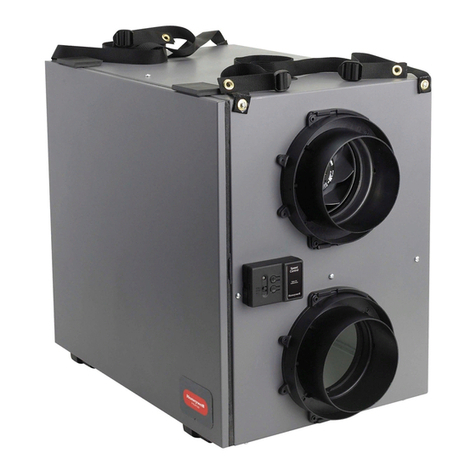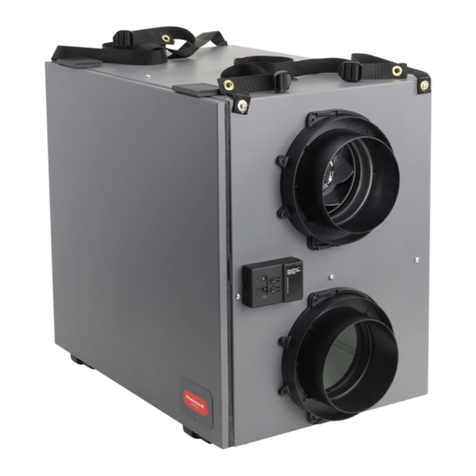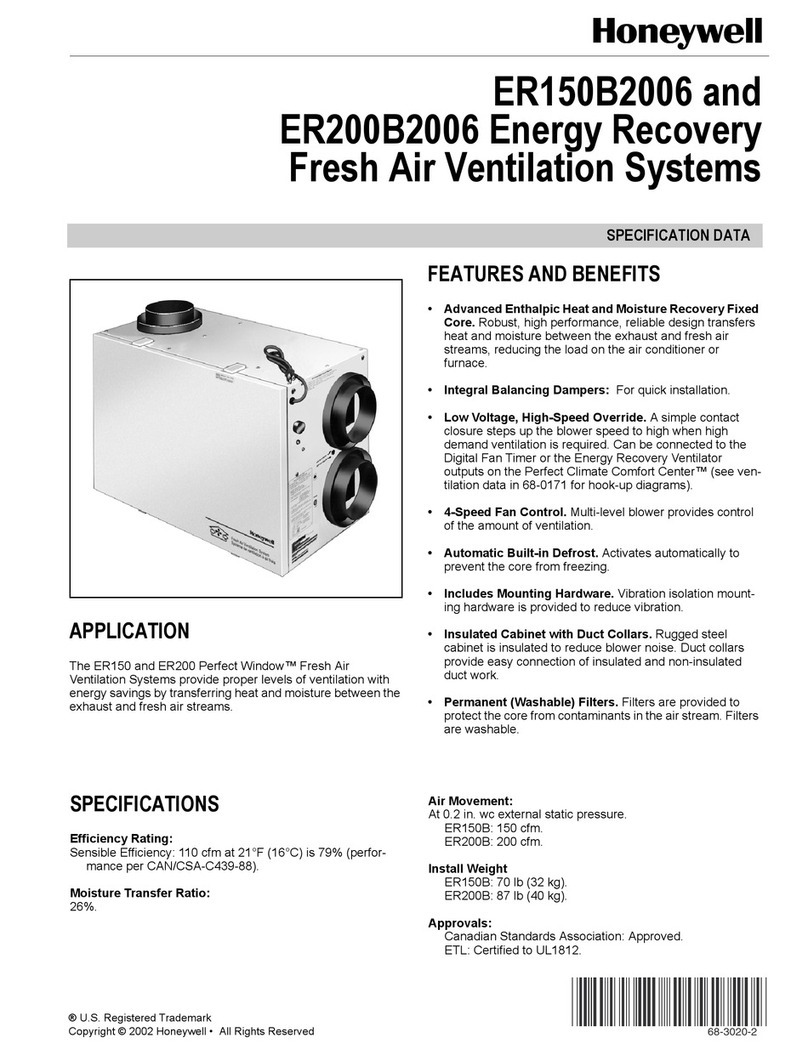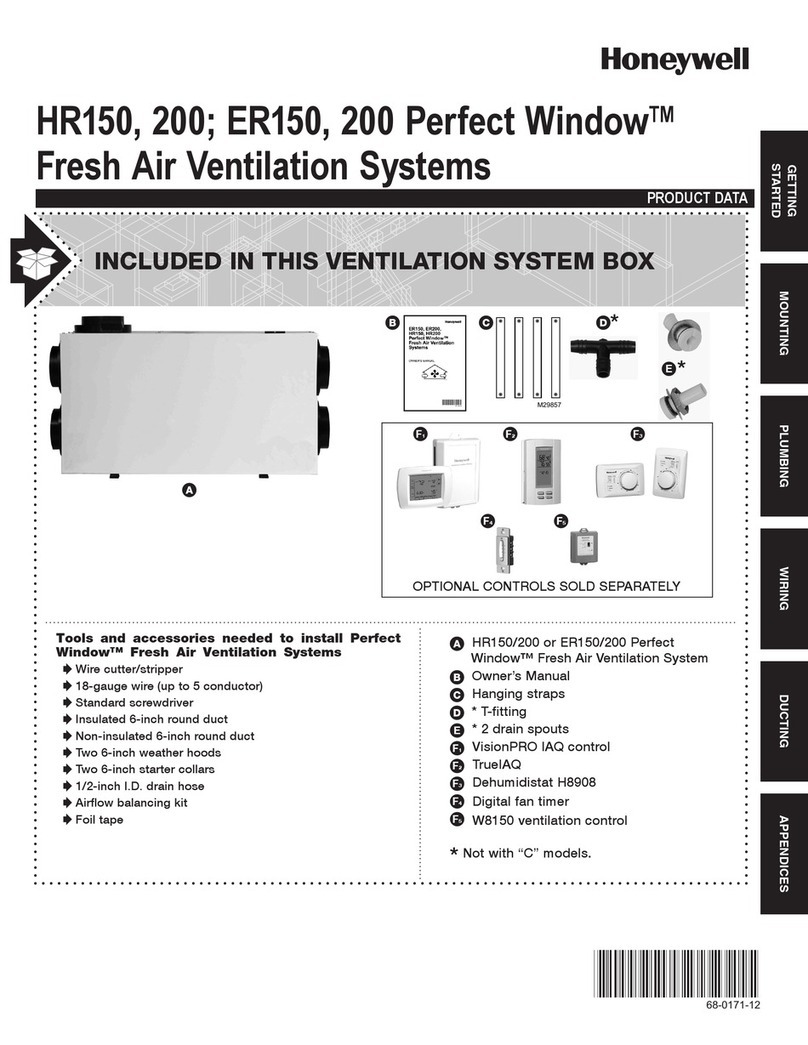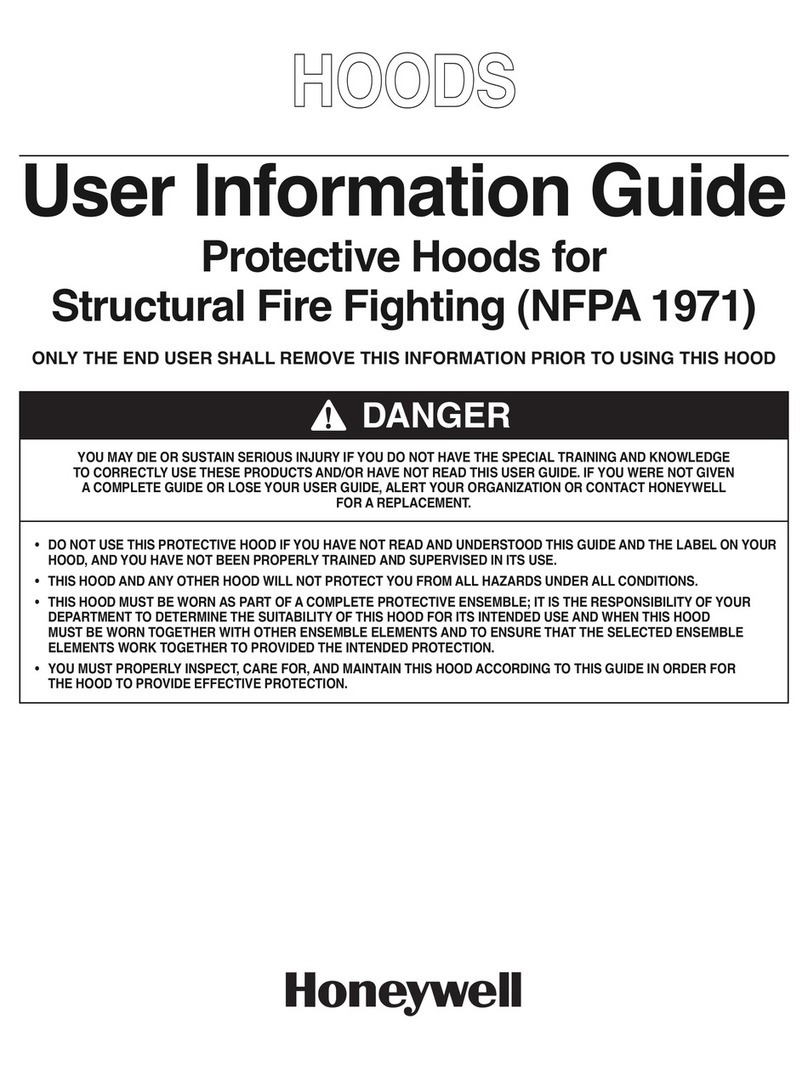
ER200 PERFECT WINDOW™FRESH AIR VENTILATION SYSTEM
68-0131—2
5
2. Use 7-in. diameter round duct for all connections to and
from the ventilator.
3. Plan fresh air supply for good ventilation efficiency.
Separate outside vents from intake and exhaust by at
least 6 ft (2m).
NOTE:
•Fresh air should not blow directly onto
occupants or thermostat.
•Do not locate the fresh air intake close to
known sources of pollutants such as
automobile exhaust, dryer vent or chimney
smoke.
4. Supply air can be ducted directly to the return side of a
forced-air heating or air conditioning system. This can
provide excellent distribution of fresh air while saving
substantially on installation.
NOTE: Continuous operation of the ER200 during
periods of occupancy is recommended. When
the furnace air handler operates, fresh air will
be distributed through the heating/air
conditioning supply registers. When the air
handler is off, fresh air will be delivered
through both supplies and returns.
5. Use electrical interlock or automatic powered damper to
prevent unwanted entry of outside air in the event that
the ER200 is turned off while the furnace air handler
continues to operate.
Balancing Airflow
Balancing the airflow is important to verify that the Fresh Air
Ventilation System is delivering the intended airflow and
energy performance. Use the Balancing Airflow instructions in
the Installation section to check and balance the airflow.
Controls
Remote Override Switch Functions—On/Off Control
If continuous ventilation is not required, an on/off control can
be used to activate the ventilator when it is switched to
Standby. Controls that can be used for this function include
dehumidistats, timers, wall switches and the ventilate function
of the Perfect Climate® Comfort Center™. If moisture control
in bathrooms is a primary function of the system, a
dehumidistat can be used to switch the ventilator from a Low
or Standby setting to the High setting. Moisture removal
throughout the entire home can be achieved only when the
outside air contains less moisture than the inside air (typically
during cold weather conditions).
With the Perfect Climate® Comfort Center™, the ventilator
can be controlled automatically by using the programmed
times or manually by pressing the VENTILATE button on the
keypad. See the Perfect Climate Comfort Center User’s Guide
(form 69-0891) for complete instructions.
Moisture Control
For optimum indoor air pollutant reduction and humidity
control, continuous operation of the ventilation system is
recommended. Increased moisture removal will always occur
at maximum ventilation rates. This high setting should be
used when first occupying a new building to remove excess
moisture from new wood, plaster, cement and other moisture
absorbing construction materials. If the system is wired to a
dehumidistat, preselected moisture levels will be maintained
automatically. For correction of severe moisture problems, the
sensible energy transfer wheel can be substituted for the
desiccant coated wheel.
Frost Control
Select models have a factory installed automatic preheat frost
control system that operates to prevent the inlet air
temperature from falling below 10°F (-12°C). The frost control
system is designed to maintain this level down to outdoor
temperatures of -29°F (-34°C) with 40 percent indoor relative
humidity. The light located next to the press-to-test button
lights when the frost control preheater is active or the TEST
button is pressed.
IMPORTANT
Release the TEST button as soon as the neon light
comes on. Pressing the TEST button longer can
cause overheating of the ventilator.
INSTALLATION
When Installing this Product
1. Read these instructions carefully. Failure to follow them
could damage the ER200 or cause a hazardous
condition.
2. Check the ratings given in the instructions and on the
ER200 to make sure the product is suitable for your
application.
3. Installer must be a trained, experienced service
technician.
4. After installation is complete, check out product
operation as provided in these instructions.
CAUTION
Disconnect power supply before wiring to prevent
electrical shock or equipment damage.
Unpack Fresh Air Ventilation System
The Fresh Air Ventilation System is shipped assembled. Check
that all the components are included. The unit consists of:
•Painted finish cabinet with starting collars.
•Variable speed fresh air control.
•Built-in preheater (on selected models).
•Two mounting straps.
•Hardware package.
•Literature package.
The Fresh Air Ventilation System comes ready for installation
as received. Wiring and ducting are required to complete the
installation. Before proceeding, check to make sure all the
components are available.
Review the Installation Plan
Place the unit on the floor; position it as it will be when
installed. Cut out the mounting template printed on the outer
carton. Use the template to determine the location of the
mounting straps. Make sure all the required duct work and
additional accessories are available before starting the
installation.
